July 31, 2008
Restoration
8 Comments
At the De Anza Electronics Flea Market, someone was selling a rather beat-up and rusty desk fan. But it was no ordinary desk fan, this one was quite old. I had to have it. Later on, it looked at me plaintively from my workbench.
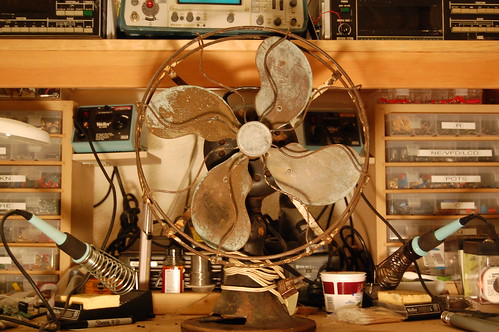
Suddenly it hit me–I had to restore this bedraggled-looking thing!
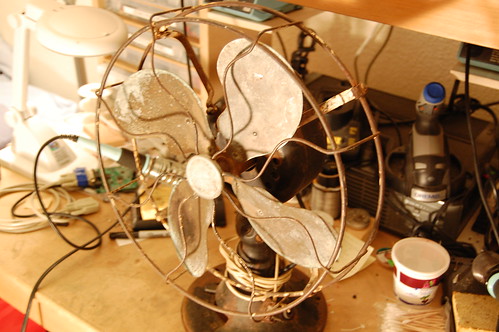
It was a really long and involved process, taking me well over a month, but I have finally (mostly) finished. Why did it take so long? Well, for example, I found that the speed coil (basically a big inductor with taps for each speed setting) was slowly being eaten by rust. Thus began the arduous process of disassembling the entire coil, pulling apart the laminations, polishing off all the rust, varnishing them again (since the laminations must be insulated from each other), and reassembling the whole thing.
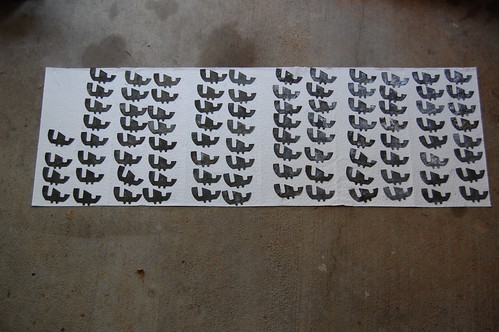
All the work really did pay off. Here is what the mostly completed fan looks like. It’s fully operational. The cotton-covered twisted line cord I purchased from Sundial Wire. The plug is actually a standard item at OSH, believe it or not. I guess styles don’t really change much. The cord the fan came with was a more modern zip cord with a quick-plug, and the replacement plug is basically a 3-prong copy of the original.
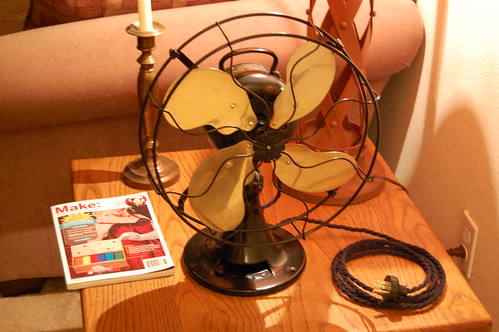
Why “mostly?” Well, the badge that goes in the center of the cage is pretty much beyond repair, and it also appears to be the wrong badge for this fan.
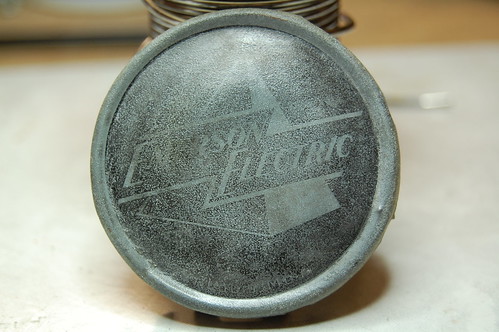
The badge should be brass with a slightly different logo. Regardless of whether or not this badge is original, brass would look a whole lot better. I have been trying (and failing at) various brass etching techniques, since I have the CAD drawing of the logo already.
Problem #1 is getting the toner transfer method to work. I have used magazine paper (an old issue of Nuts and Volts: my Make magazine issues deserve better!) and it really does not work for me, probably due to the amount of toner my laser printer puts out. Trust me, I tried a dozen times or so.
Problem #2 is the actual etching process. Salt tank etching was a bit too faint, so next time I will try ferric chloride, which is usually used for PC boards, but should work for brass as well.
Problem #3 is getting the etched brass sheet into the proper shape, which is convex in the middle with a rounded rim. Metal tabs in the back fold around the disc in the center of the cage to hold the badge in place.
If you have any ideas, drop me a line in the comments…
July 31, 2008
Projects
1 Comment
Somebody at Maker Faire was interested in Nixie tube jewelry that actually lit up. I decided to take up the challenge.
The hard part is not making everything small, but making it last a long time on a single battery. In this case, the battery is a CR2032 lithium coin cell. A small circuit takes the 3 volts and steps it up to about 150V which is barely enough to light the Nixie tube. Theoretically it should last around 10 hours or so.
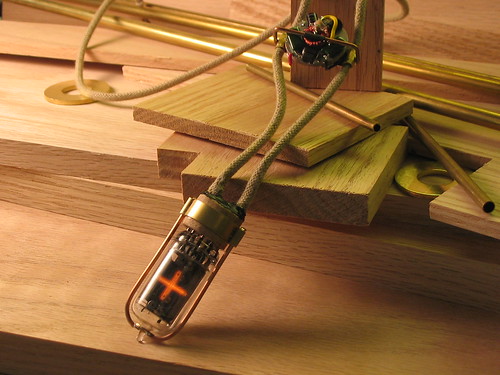
The socket was constructed using my custom-made Dremel drill press. To figure out where to drill the holes, I put some clay on top of the wood and pressed the pins of the Nixie tube into the clay. Then it was a simple matter to mark the pin holes, remove the clay, and drill. The pins are actually from a DB25 solder tail socket, since they fit the Nixie pins perfectly.
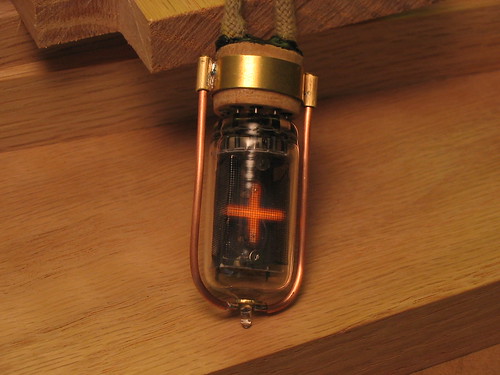
The power supply circuit has its problems, and I am trying to improve on it.
July 31, 2008
Restoration
1 Comment
Previously I posted about a vintage Clough-Brengle oscillograph I obtained. It’s been a long process, but I’ve restored it to operational condition.
One of the first steps in the process was to figure out what needed to be fixed. In electronics this old, the first thing I check are the capacitors. They were mostly paper capacitors which I just replace outright since they usually fail.
For this restoration project, I want to keep the vintage look as best as possible. One way is to dress up the new capacitors in the clothes of the old capacitors.
In this picture you can see the metal cans containing the old capacitors and the new ones soldered on top for testing purposes.
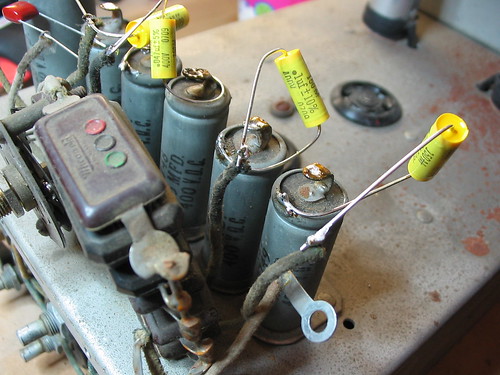
Here I have used pliers to bend the flange back and remove the “lid.” The stuff inside is a wax that insulates and holds the actual capacitor roll in place.
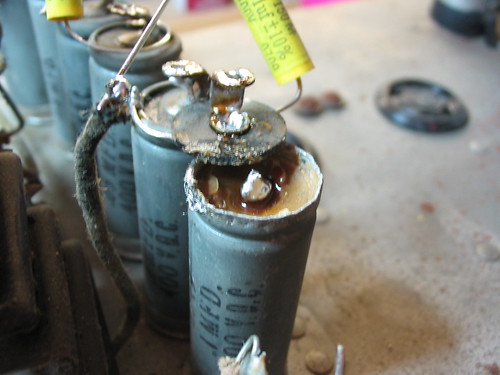
The easiest way to remove it was to put a big wood screw right in and pull it out with pliers.
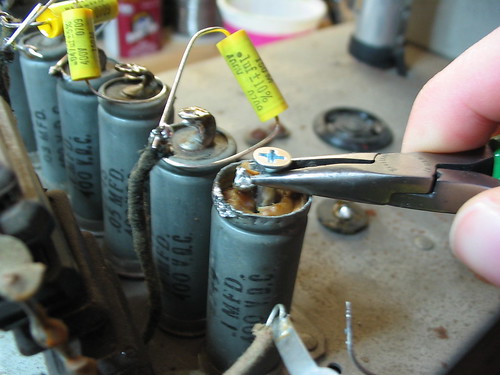
Now you can see what the roll itself looks like. It’s actually Kraft paper (like a very thin version of grocery bag paper) that has been vacuum deposited with an aluminum film. Two sheets are rolled up together producing the capacitor. The Kraft paper is impregnated with oil to increase the dielectric strength.
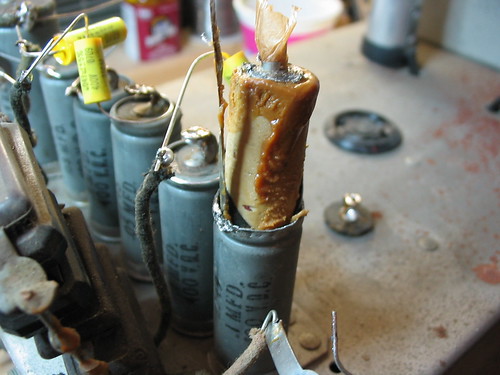
Here’s a larger one that I unrolled all across my workbench.
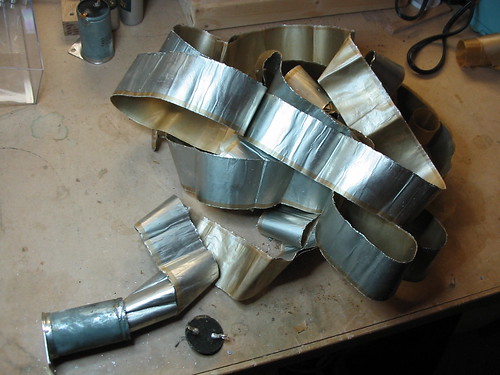
Notice how much smaller the new capacitor is. This fits easily in the metal can that once contained the old capacitor.
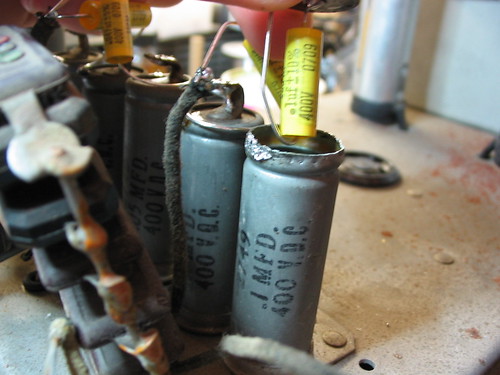
It was difficult to close the rolled metal lip without denting it, so it doesn’t quite look like the original, but it still beats ripping out the old capacitor or having the new capacitor squat on top like some sort of parasitic insect.
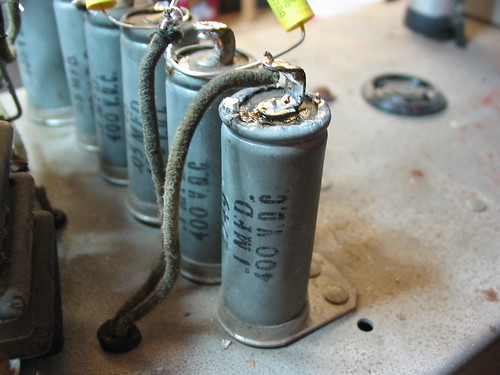
After recapping everything, it was time to strip down the chassis and get rid of the rust. I got rid of most of it, although there was a lot of pitting and such left over. I used Naval Jelly which does a good job of converting the original iron oxide (ugly red rust that spreads like gangrene) to iron phosphate (which pretty much just sits there). The grommets had all hardened and were crumbling off, so I replaced those as well.
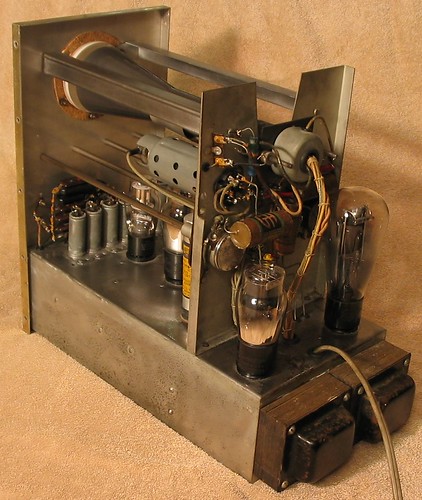
Here’s a closeup of the back. You can see a few cardboard-roll style capacitors which have actually been gutted and fitted with shiny new capacitors on the inside. I sealed the ends using the old wax. Speaking of capacitors, I also had to replace two big electrolytic filter capacitors. The insides were filled with hardened pitch which I had to drill out to make room for the new capacitors, which were about 1/10th the size. Don’t you like the label?
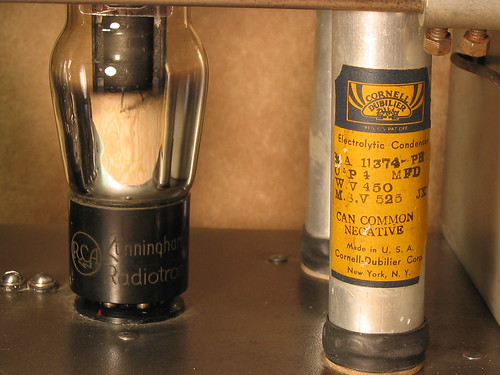
This thing runs great now. I even dragged it out to the Maker Faire, but I didn’t plug it in for fear of wandering fingers (I left the cover off to expose the excellence inside).
















